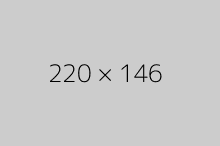A photo of a baby in a board (1911).
Tw-Wah-Y: This picture depicts a child of wealth. Notice the two strand wampum necklace with abelone shell, the dentalium headband with brass trade beads and abelone shell. The beaded baby board and bow with trade beads attached. Vivian Adams, Yakama
Ceremony
The babyboard is unique it only belongs to that child. In ceremonies if children were still in the infant stage and given a indian name they would be presented with a bigger board from family members. If the child passed away in infancy their board would be placed with them during burial.
Oral Tradition Lessons
We are taught as mothers that the baby enjoys the baby board. Before they are born this is how babies are in the mothers womb, tightly wound until birth. Babies will continue to grow and baby boards range in size. Usually the mother or her family members would immediately make a board after the birth of a child. We are taught never to make it before, unless it is close to the birth. We believe that the child is a gift and can be taken away if not careful. This board was probably only made a few days before the birth of this child with family members helping with the materials.
Tribal Histories
It has been shown throughout our history that the baby board was a part of many lives. The board could be transported with the mothers hanging them from a saddlehorn or carrying them on their own back. They could protect babies from being injured due to the bow it would ensure that the child could not be injured.
Baby boards, called cradle boards by art historians, historically were made from hides and decorated with natural materials. Today, shells, coins, colorful fabrics, and buckskin are still a part of the materials used to embllish the board to grab baby's attention and to enhance baby's growing space. Vivian Adams, Yakama
Songs
Children are taught songs at a early age. Traditional washat songs always talk of the sun, the earth or animals. Both parents learn learn these songs to teach their son or daughter. When singing parent would rock their baby and the items hanging from their bow would also be heard helping the baby to recognize the items and songs.
Daily Life
We are taught as mothers to always put your baby in the board. You feed your baby, burp your baby, change their diaper and put them back in the board. Relying on your baby being asleep for at least three hours until their next feeding. You can get many things done while your baby is in their board. If you are tired you sleep when baby sleeps, never ignore your child. You always kept your baby board covered to protect your child.
The bow of the board was protective spiritually and physically. The rosewood bow helped to keep away negative beings and when tied in a certain way, didn't allow baby's face to be hit should the board fall. The bow allowed a cover to be placed over the board to shield baby from the elements and to help sleep in a more quiet manner. Babies raised in baby boards feel so comfortable in the boards, they will cry to be put back into their boards for naps or for sleep time. Vivian Adams, Yakama
Rites of Passage
Families have kept babyboards within their families and passed them down through their line. Mothers, aunts, and grandmothers would remove the old material off and use the babyboard and make a new one. Wild rosebush would be covered with buckskin and beads to make the bow over the cradleboard.
Games
Babies were always able to look up at their bow and see the beads dangling from top. These would be used to make noise as you rocked them to sleep; also they would hear these sounds look up and it would help with their vision on focusing in on their items on the bow.
Health
Babies would grow and as they grew the would suffer from growing pains. Being wrapped in their boards would help them as their body wasn't always enduring the pain. The babyboard would help during the seasons. During the spring and summer lighter materials were used to help keep the baby cool and comfortable, also during the fall and winter heavier warmer materials would be used to adjust to the changing temperatures. The umbilical cord would fall off a child's bellybutton this would be wrapped in buckskin and beaded than placed on the child's bow to protect them from spirits and people.
Gatherings
Children would attend functions and people would know that these children were special. Babyboards are very individual, it would be for your child and have special items on either the board or bow. An interesting fact is that for some grandmothers if this were their first grandchild a special babyboard would be made of complete buckskin with beadwork. This picture shows the intricate designs and is on trade cloth but the bow and board have beadwork on them.
Education
A babyboard was a useful education tool due to it would have to be shaped and measured. Thus utilizing some of our present day math skills for the men. The woman would have to cut the four pieces used for a board one to cover the entire board, the two sides to wrap and the last as a head cover to protect the child from the elements. The last part would be measuring the buckskin to add to the two side wraps to lace the child in, also to affix to the bow so that it would be over the child to see and laced to tie on the bottom half of the board.

